In 2020 and 2021 Butterfly Conservation Ireland received reports of the Comma from Carlow, Cork, Dublin, Kildare, Kilkenny, Laois, Louth, Limerick, Meath, Tipperary, Waterford, Wexford, and Wicklow. Over 120 records, some of more than one individual Comma, have been received during 2020-2021, more records than for some long-term natives such as Cryptic Wood White, Brown, Purple and Green Hairstreak and Wall Brown.
The Comma is now an established resident. Confirmation of breeding is known from Carlow, Wexford and Wicklow where eggs and larvae have been reported and it is almost certain that they are breeding in the other counties listed here. It has also been reported in County Fermanagh this year. The butterfly can be found right into late October so there is plenty of time left to see it.
Check flowering Common Dandelion, Ice Plant, buddleia, Devil’s-bit Scabious, and Common Ivy and ripe fruit such as blackberry, apple, and pear. Gardens, parks, hedges, orchards, and bright areas of woodland such as clearings, tracks, and wood edges are all favoured by late, pre-hibernation Comma butterflies.
I had the charming experience of the Comma in my County Meath garden this August and September, where it has been feeding on Common Knapweed and Devil’s-bit Scabious. Watching it at close quarters teaches a lot about its habits. It is generally found as a single specimen in autumn, unlike its close relative, the Small Tortoiseshell. It likes to feed in direct sunlight. When cloud obscures direct sunlight, it will bask on a leaf low down, or on the bare ground but unlike the Small Tortoiseshell and Peacock it is less likely to remain long in such places if there is prolonged cloud cover.
When it remains cloudy, it usually flies high into a tree or near the top of a hedge, settling in a sheltered but open location. It will bask there when the direct sunlight returns and often remain there for some time before resuming feeding. It is easily the most arboreal of all the vanessids, aside from the Silver-washed Fritillary. The vanessids are the colourful species in the family Nymphalidae, such as the fritillaries and the Peacock.
Because it feeds alone, it appears to be less vulnerable to bird attacks than species that congregate in abundance at feeding areas. Like its relatives, it will remain in a garden with high nectar content for some days before moving to a new feeding area or entering quiescence for the winter. Unlike the Small Tortoiseshell and occasionally the Peacock, it makes no attempt to over-winter in a house or outbuilding. It needs woodland, probably an area of dense cover, in which to pass the winter.
One of the problems with the vanessids is separating the sexes, which appear alike in most of the species. I am going to look at the Comma in a little detail to try to describe how this can be done.
Firstly, I will look at the size. The female has a slightly larger wingspan than the male. The wingspan range in the species is 50-64mm, with females at the upper end of the range.
Next, I will consider the colour. There are two colour forms in the Comma. The over-wintering cohort (which consists of two generations) is darker than the generation of Commas that breed in mid-summer. The form that overwinters and breeds the following spring is known as the dark form. This form has an orange-red ground colour on the upper surfaces of the wings. Males are slightly deeper or darker in colour.
The short-lived, direct-breeding summer generation is golden-coloured on its uppersides; this flies mainly during July and the first half of August. This is known as the light or golden form. Again, males are smaller and slightly darker.
The best way to separate the male and female of the over-wintering dark generations based on appearance is by looking at the underside of the forewing. In the male, there is a darker band present in the forewing margin, in the scalloped area of the forewing. This is shown in the following two photographs, which show the dark form of the Comma (the form that overwinters as an adult butterfly and breeds the following spring). The male underside is often more variegated in colour but there is a good deal of variation between specimens of both sexes, with many examples showing a more variegated appearance than the two examples shown below.
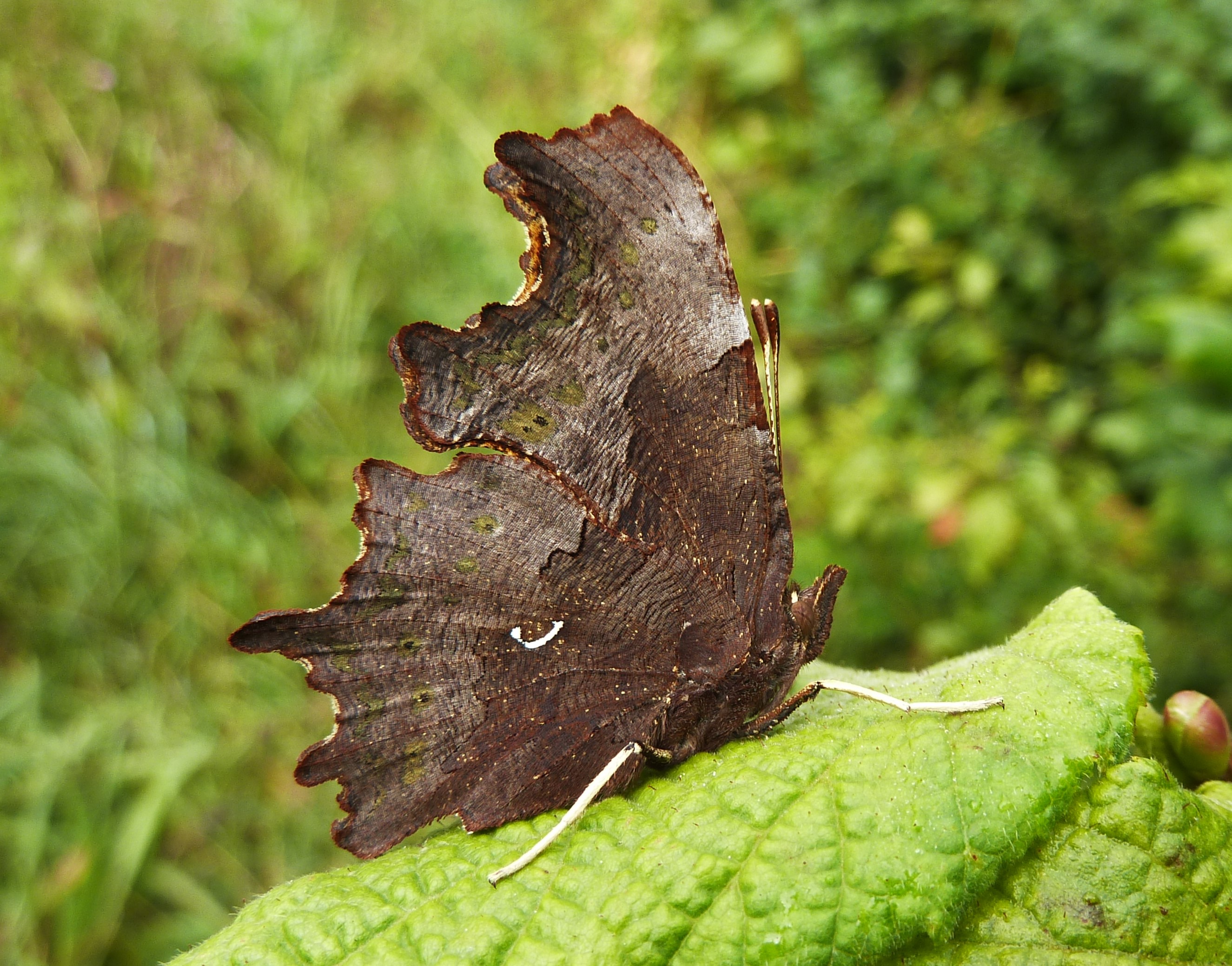
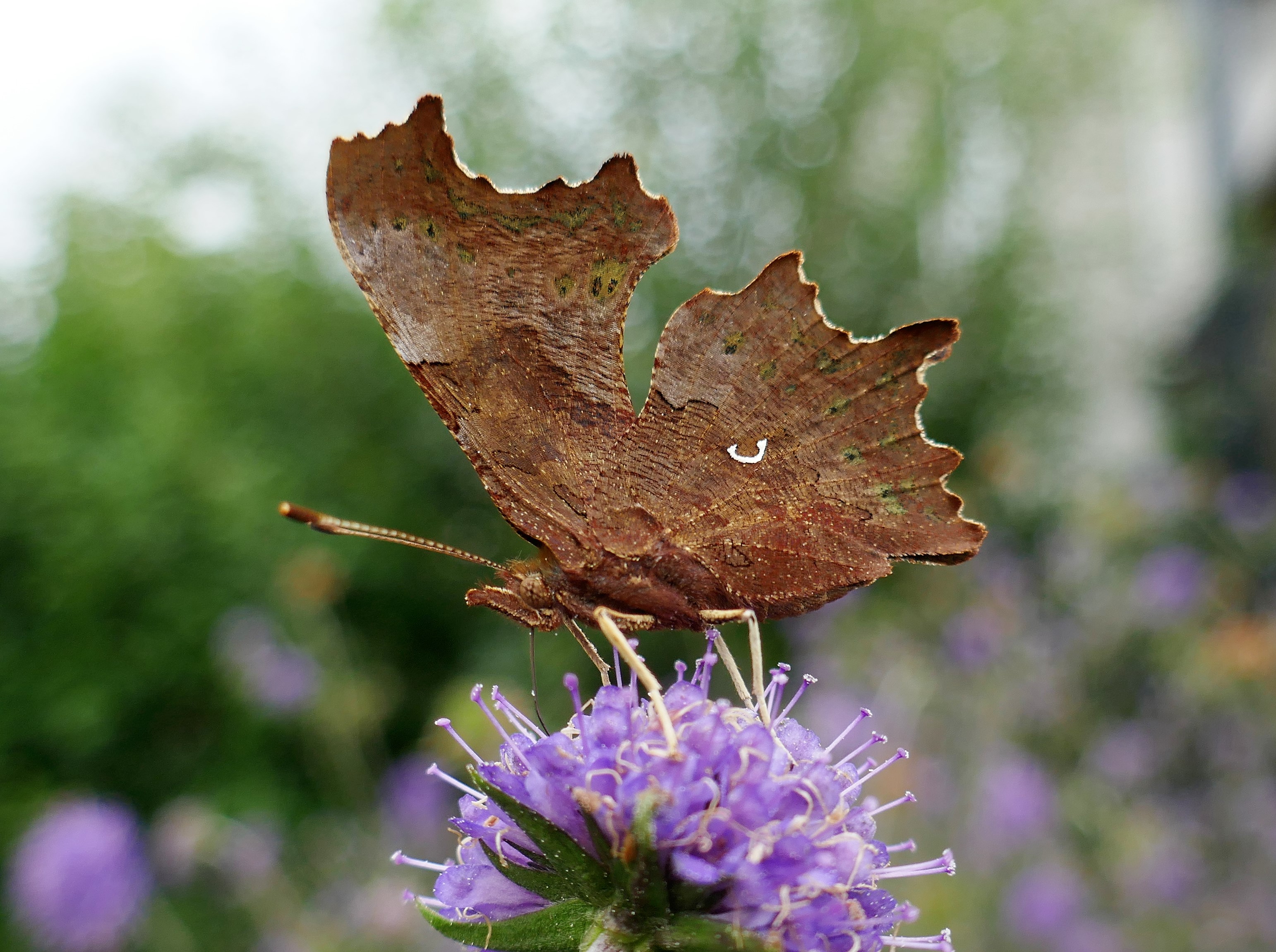
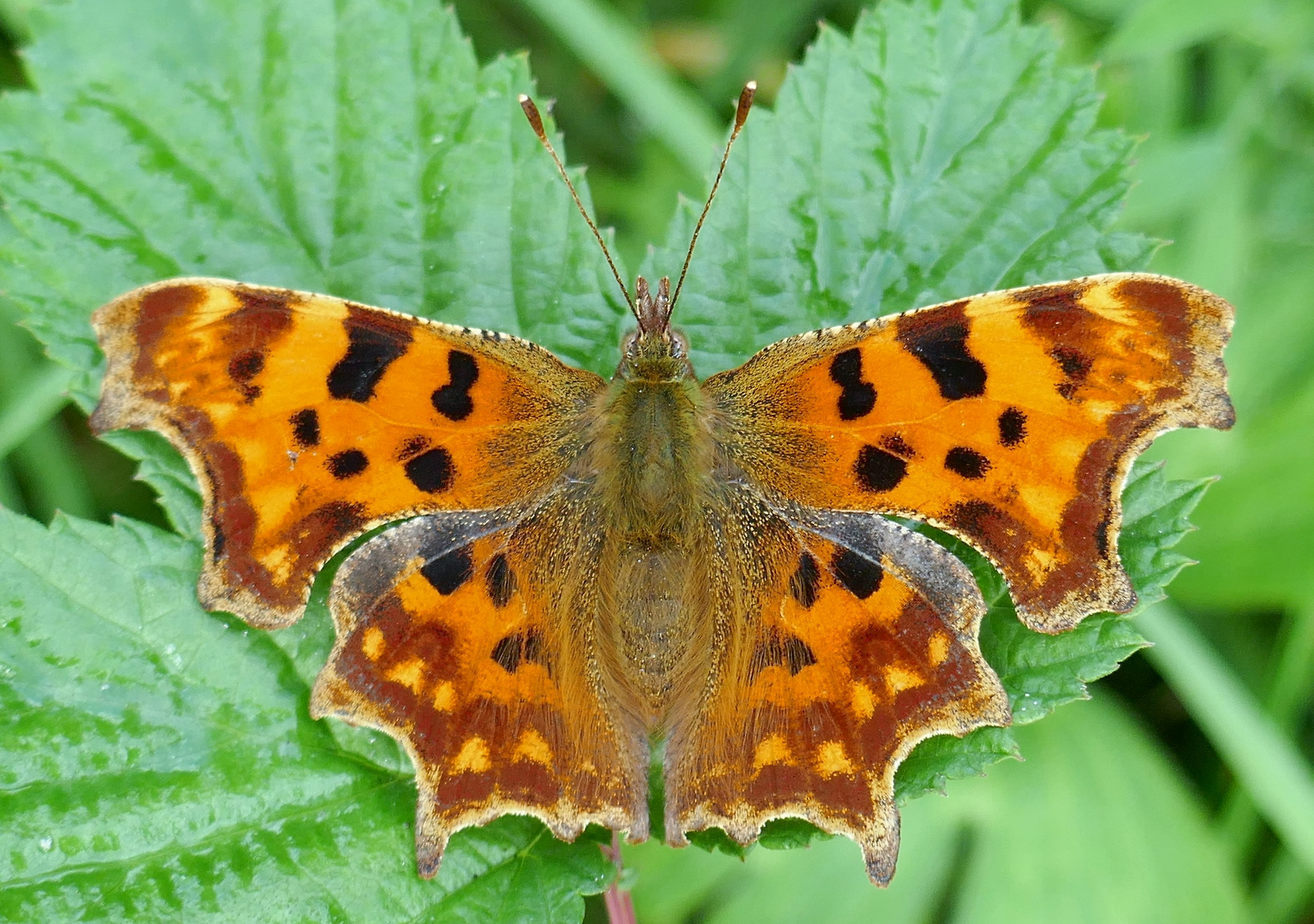
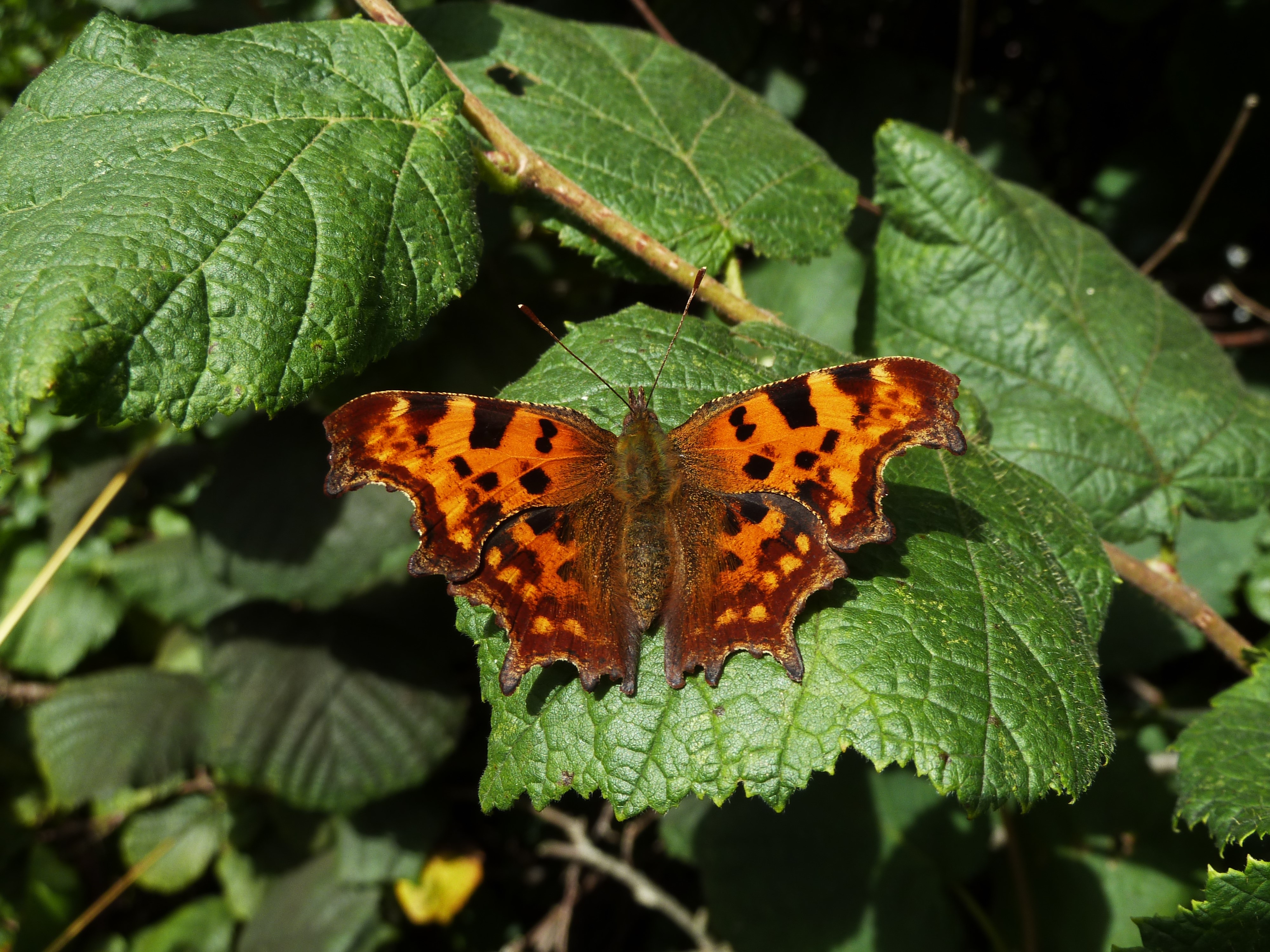
Separating the sexes of the golden form (light form) that breeds in mid-summer based on the insect’s appearance is trickier. The sexes look very similar but, as is the case with the dark form, the indented area on the forewing leading edge (costa) is deeper and the tails on the hindwing are narrower and appear slightly longer in the male.
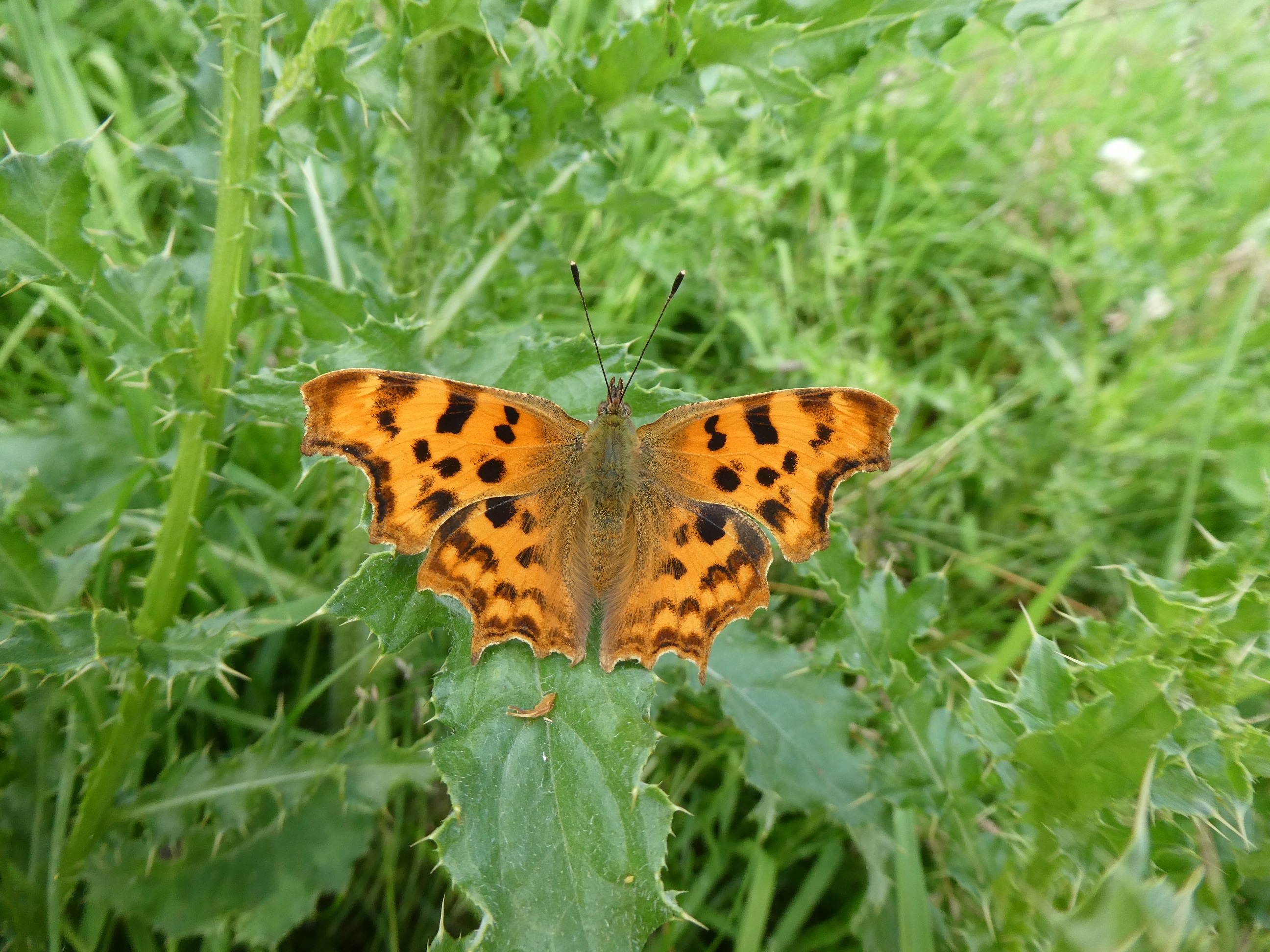
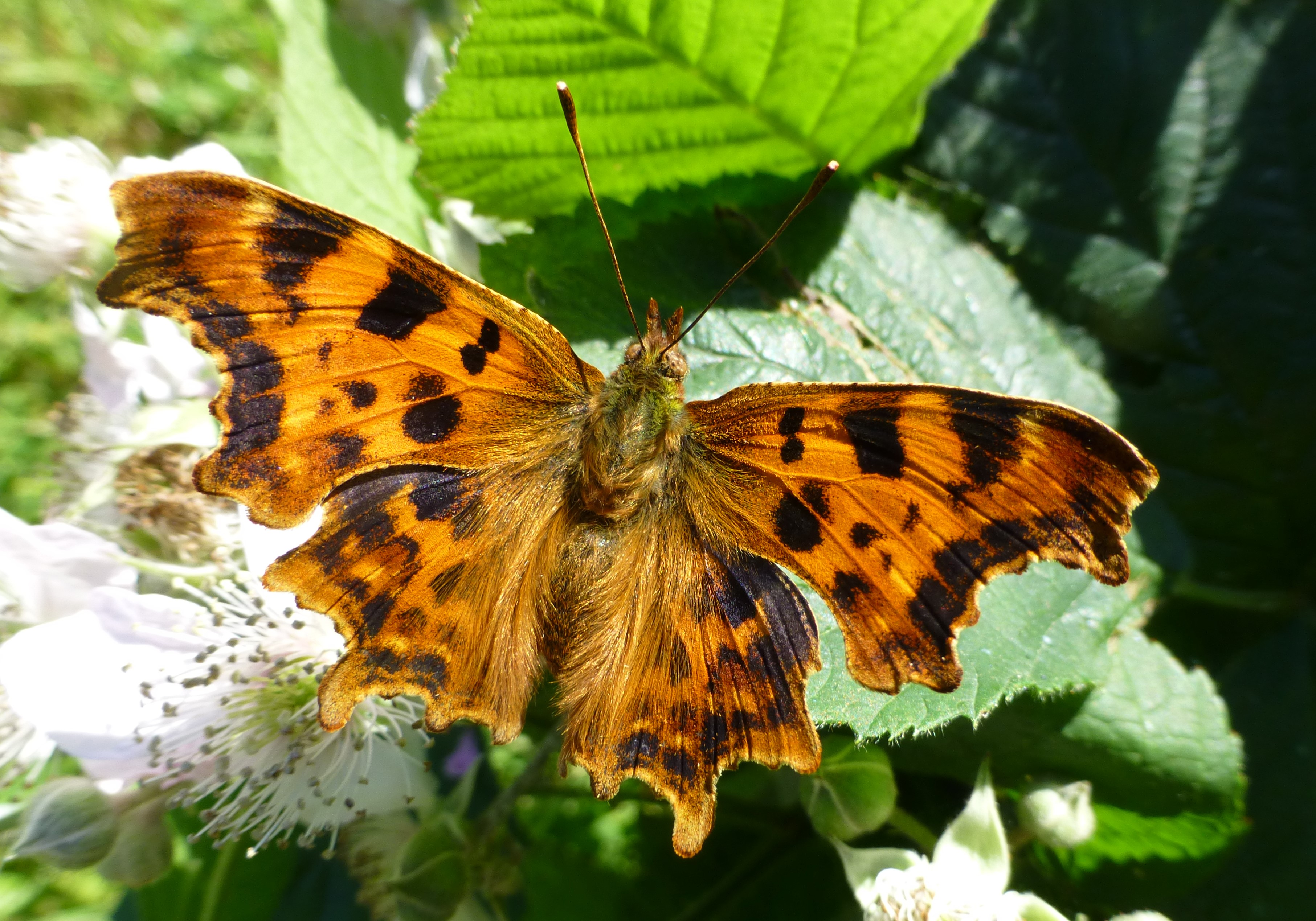
Looking at the underside of the golden form, the male’s underside is generally darker. Look closely at the two photographs underneath this text.
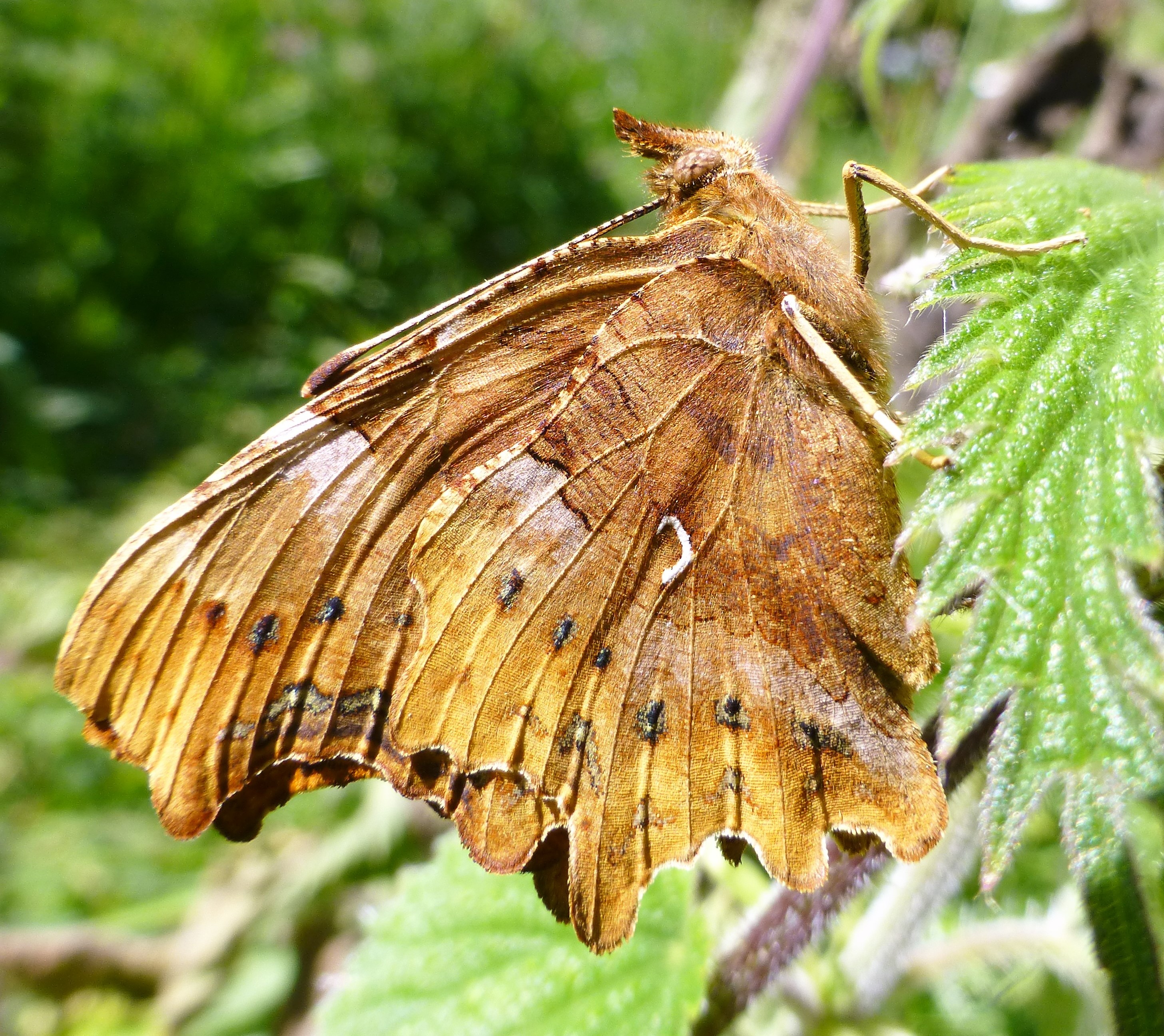
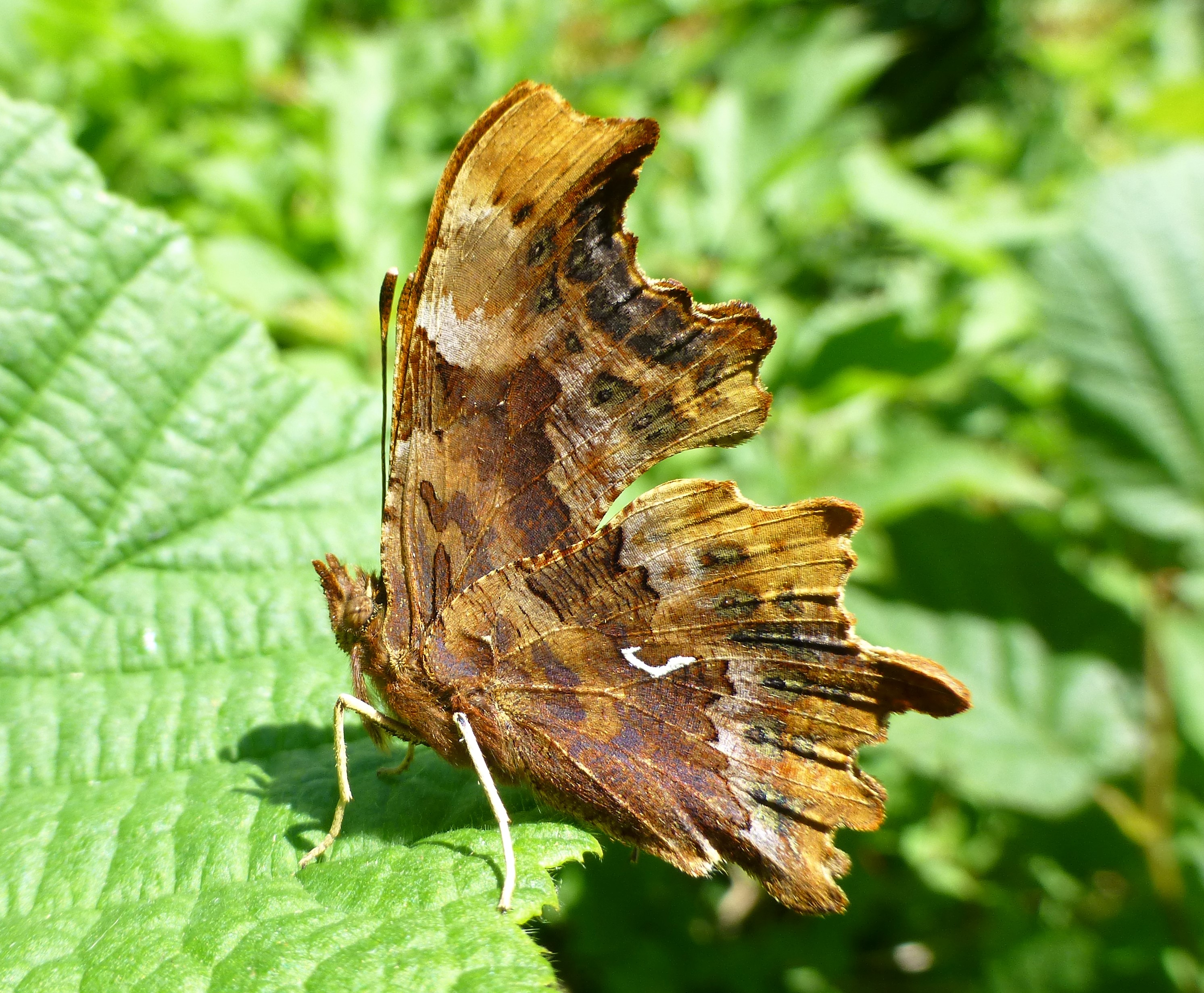
Separation of the sexes can be achieved by observing the behaviour of the butterfly but this applies only to breeding individuals in April and May and July and August when the males are territorial. They perch using an upright, alert posture on a leaf at the edge of a ride or clearing, ready to fling themselves at any nearby male to offer fierce resistance, often resulting in a two or three-way fight, flying vertically with impressive power. Males will also patrol a clearing especially given sustained warmth and sunshine, usually returning to the perch post it flew from unless he meets a receptive female. Females do not pursue each other or males. They spend more time basking, feeding and fluttering gently around nettles on which the eggs are laid, usually singly, on the upper surface of the leaf of its foodplant, very close to the edge. On hatching, the newborn caterpillar moves to the underside to feed.
Differences in the appearance of the sexes can be very hard to see in the wild, and harder when one only is seen. For me, it is easier to use behaviour as the distinguisher. However, the sexes are easier to separate than the Small Tortoiseshell, Peacock, Red Admiral and Painted Lady which look identical apart from subtle differences in the shape of the abdomen. As for the butterfly itself, it identifies the sex of other Commas easily, as can be seen when observing breeding individuals, especially when rival males encounter each other!
Why you might ask, are there two colour forms in this butterfly? The answer is complicated but essentially it is connected with the breeding and overall survival strategy. The Comma with the darker pigmented wings lives much longer than the light form that breeds shortly after emerging, then quickly dies. Long life requires the nitrogen sourced from foodplants to be concentrated in the thorax to strengthen it and in the wings, which are darkened to provide effective concealment among fallen leaves and woodland debris. The dark colour makes it harder for birds and mice to find. The golden form Comma breeds immediately so it does not need to have a long life. In this form, the nitrogen is concentrated in the abdomen so that the eggs and sperm are ready for early reproduction.
The factors that influence the development of light and dark form adult Commas have been identified as photoperiod (hours of daylight, especially direct sunlight), temperature, the nutritional quality of the foodplant and the species of foodplant used by the larva. In essence, larvae that receive the best nutrition in the warmest temperatures with the highest daylight hours are more likely to produce the golden form. This means the Comma will fit in two full generations in years with sunny, warm springs as long as they are feeding on foodplants growing on fertile, moist soil. The foodplant that is mainly (or solely?) used in Ireland is Stinging Nettle, although it also uses Hops and Wych Elm in Britain.
It is likely that these are the years when the Comma disperses further and has higher survival rates over the winter. We have, thanks to our recording scheme and your records, established that the Comma is producing two full broods in Ireland, the golden form as the first generation followed by their dark offspring. We have also learned that in some areas and or under certain conditions the Comma is also producing just one generation that will enter hibernation in summer, and will therefore need to survive three extra months before breeding the following spring. This may be happening when there is an overcast, cool spring or when an old female lays her last eggs in June which means the resulting caterpillars hatch or develop when daylight starts to decline and the skies are generally cloudier than they are during spring.
This complex breeding strategy provides survival safeguards for this intriguing butterfly, and the more that is learned about the species, the more insights are provided into the complexities of its relationship with the biotic and non-biotic elements of its environment, and in the deeper interconnectedness of the ecosystems.
Meanwhile, we are delighted to see this very lovely butterfly expanding from the southeast northwards and westwards, so keep sending us your records to help us to track its progress.
If you have a question about this butterfly, feel free to ask. Email: conservation.butterfly@gmail.com
All photographs © J. Harding.

